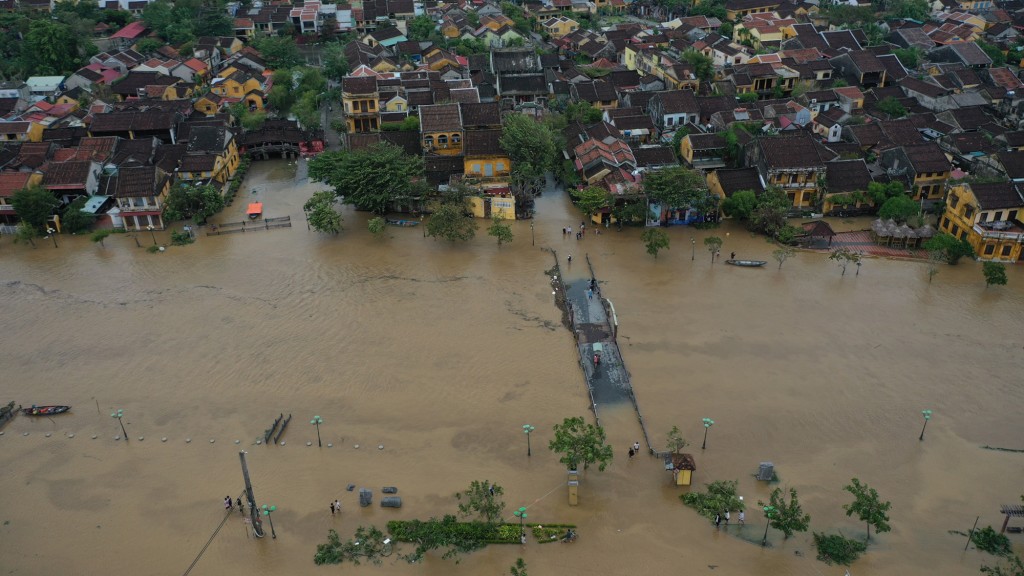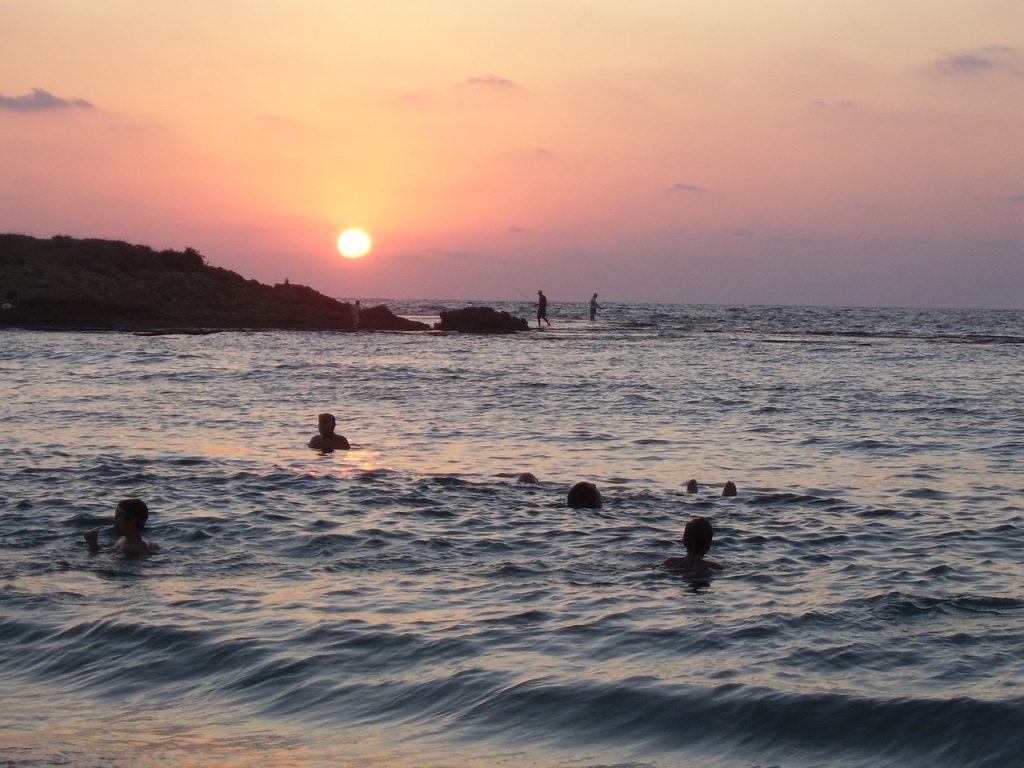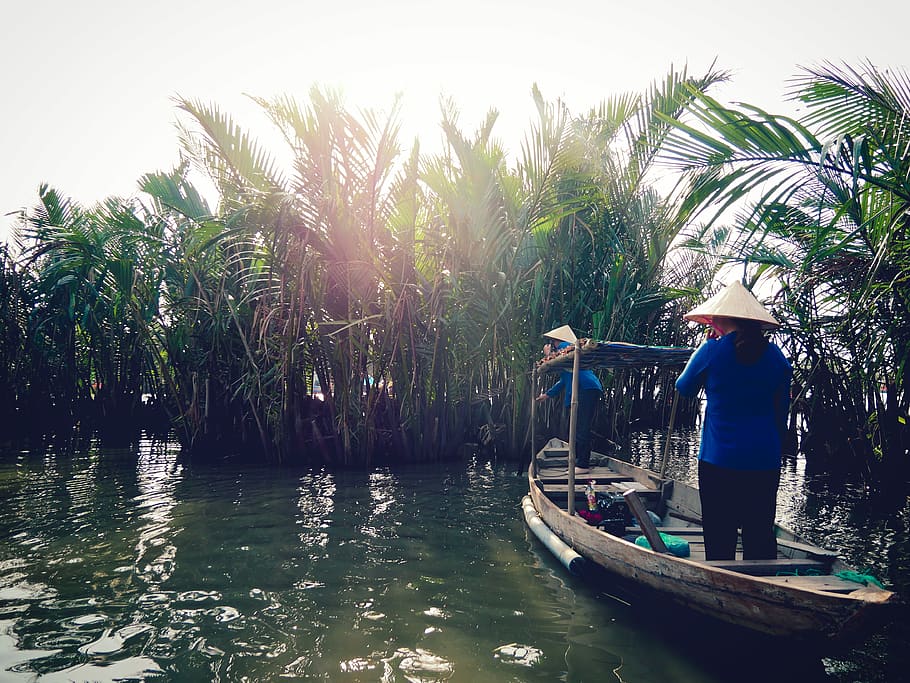
Venturing across the long and slender expanse of Vietnam, stretching 1,025 miles (1,650 km) from north to south, offers a mesmerizing journey through diverse climates and ever-changing weather. Comparable to the distance between Vancouver and San Francisco, determining the worst time to visit Vietnam becomes a puzzle. Fear not, as we unravel the weather secrets and empower you to plan your Vietnam trip based on your preferences.
Worst Time To Visit Vietnam
When considering the worst to visit Vietnam, the rainy season emerges as a prominent obstacle for tourists. The period starting from June and extending until October, witnesses frequent and intense rainfall throughout the country, making it the worst time to visit Vietnam.

- Engaging in activities such as trekking and outdoor ventures becomes impractical due to the elevated risks of mudslides and landslides.
- The rainy season brings forth a plethora of inconveniences and potential dangers.
- The substantial precipitation can damage property and give rise to hazardous circumstances, especially in flood-prone regions like the Mekong Delta.
Why Rainy Season is the Worst Time to Visit Vietnam?
The rainy season is not the right time to visit Vietnam for numerous reasons. Let’s go step-by-step
Typhoons
Typhoons are a major factor to consider when deciding on the worst time to visit Vietnam. These powerful storms impact the northern and central regions, potentially causing disruptions to travel plans.
If you are planning a cruise in Halong Bay between June and September, be aware that it may be subject to cancellation or delays due to the risk of typhoons and storms in the bay during this period.
Similarly, if you intend to explore coastal destinations like Hoi An in central Vietnam, be prepared for possible interruptions caused by typhoon-related flooding, which typically happens from September to November.
Vietnam experiences a considerable number of typhoons, averaging around 11 occurrences annually. The southern coastal strip, the northern coastal strip, and the northeast regions are most heavily affected.
The typhoon season in the Pacific begins in April with relatively milder storms and continues until November, with the most intense typhoons typically occurring in August and September.
To exemplify the potential impact of typhoons, let’s consider the case of a typhoon named “Noru,” which made landfall in Vietnam approximately a year ago. On September 28, 2022, at 4:00 am local time near Hoi An, “Noru” reached a wind speed of up to 159 km/h, forming a typhoon with a diameter of 5 kilometers.
According to the internationally recognized Saffir-Simpson classification, this typhoon was categorized as a category 2. Measurements taken in the open sea recorded even higher speeds, reaching 256 km/h (category 5).

Suggested Reading: Worst Time To Visit Philippines
Hiking or Trekking
Vietnam boasts stunning destinations such as the captivating mountains of Sapa and the lush jungles of Phong Nha, offering an array of trails and immersive experiences for nature lovers. However, if you’re considering a hiking or trekking adventure, it’s advisable to steer clear of visiting Vietnam in August.

This month aligns with the peak of the rainy season, especially in the highlands, presenting significant challenges for outdoor pursuits. The heavy rainfall experienced during this period can lead to temporary closures or inaccessibility of trails due to unfavorable weather conditions.
Mold and Mildew
When it comes to mold and mildew, the “Nồm” phenomenon—the humid season—is the worst time to visit Vietnam. This period, which occurs from February to April, is characterized by high humidity levels, reaching up to 90% or more.
Visitors may be immediately bothered by the unpleasant smell of mold in their accommodations, affecting their overall enjoyment. Despite cleaning, the dampness and mold can leave a persistent odor.
Moreover, mold poses health risks, especially for those with allergies or respiratory problems. Allergic reactions and respiratory issues can hinder visitors from fully experiencing Vietnam’s vibrant culture.

Swimming
Travelers to Vietnam during the wet season have several difficulties, especially if they plan to go swimming. For example, Phu Quoc Beach, known for its peaceful and calm atmosphere, undergoes a transformation during the rainy season.
The sea, once tranquil, becomes restless with strong waves. Especially on stormy days, swimming or diving in the sea can pose a safety risk. Therefore, visitors should avoid these activities to ensure their well-being.
In addition to the weather-related concerns, there is another restriction in place that affects swimming and scuba diving in Vietnam. A recent travel update reveals that the country has imposed a ban on these activities in the Nha Trang Bay region. The reason behind this decision is to protect and restore damaged coral reefs.

Mosquito Season
Apart from the challenges posed by the rainy season, another factor that makes it the worst time to visit Vietnam is the prevalence of mosquito-borne diseases during this period. Due to the country’s tropical climate and abundant rainwater, stagnant pools are formed, creating favorable breeding grounds for mosquitoes.

As a result, tourists traveling during the monsoon season are at a higher risk of contracting diseases such as malaria and dengue fever if they do not take proper precautions.
Related Reading: The Worst Time to Visit Goa [2023 GUIDE]
Boating Accident
Visitors should be mindful of the occurrence of boating accidents in the rainy season. These accidents can be attributed to cold water immersion, which has led to numerous fatalities.
When individuals are suddenly exposed to cold water, it can trigger the “gasp reflex,” causing them to involuntarily inhale air or water. This reflex can result in cardiac arrest, temporary paralysis, hypothermia, and ultimately drowning.

Visitors are particularly susceptible to these risks, as they may be unfamiliar with the local water conditions and the potential dangers of cold water immersion. It is crucial for visitors to exercise caution when engaging in water-based activities, especially during periods when water temperatures are colder.
When Does Vietnam Get the Most Tourists?
The busiest and most crowded time to visit Vietnam is during the months of July and August. The weather during this time is known for its hot and humid conditions, creating an inviting environment for visitors.

Except for the far north, the entire country experiences these climatic conditions. These months mark the high season for tourism, both domestic and international. Further, events such as the Danang International Fireworks Festival, Trung Nguyen, and the Children’s Festival, are highly anticipated and draw in a significant audience. December also gets busier due to Christmas.
In 2022, Vietnam welcomed over 3.6 million tourists, marking the much-anticipated return of inbound travel. The projections for 2023 are even more exciting, with approximately 8 million inbound tourists expected to visit the country.
When Does Vietnam Become Most Expensive?
The most expensive time to visit Vietnam is during the holiday period in December and January.
- December: Even though Christmas Day is not a national holiday in Vietnam, it is celebrated nationwide, particularly in places like Phát Diệm and Ho Chi Minh City, where midnight Mass attracts a large number of attendees. The high demand during this festive season drives up prices for accommodations and other tourist services.
- January: The weather plays a role in driving up costs as the far north experiences bitterly cold temperatures, and there is even a possibility of snow. Additionally, the Dalat Flower Festival, held early in the month, attracts a large number of visitors with its magnificent flower displays, music performances, fashion shows, and wine festival, contributing to the overall increase in expenses.
These months see a significant influx of tourists, leading to crowded attractions and higher prices. It is advisable to plan and book accommodations well in advance, as prices can increase by up to 50%.

Editor’s Pick: Worst Time to Visit Egypt – Month-by-Month Analysis
Month By Month Analysis: Choose Your Own Trip Time
If you are planning your trip to Vietnam for a certain month, use this month-by-month analysis to evaluate the most appropriate time to visit the country

January in Vietnam
- Average temperatures: 17°C to 22°C (63°F to 72°F)
- Weather: Cooler and drier in the north, while warmer and more humid in the south
- Activities: Exploring Hanoi and Ho Chi Minh City, visiting Halong Bay, hiking in Sapa
- Special events: Tet (Lunar New Year) celebrations, traditional festivals
- Crowd level: Moderate to high, especially during the Tet holiday season
February in Vietnam
- Average temperatures: 18°C to 24°C (64°F to 75°F)
- Weather: Similar to January, with cooler temperatures in the north and warmer temperatures in the south\
- Activities: Visiting the ancient town of Hoi An, exploring the Mekong Delta, relaxing on Phu Quoc Island
- Special events: Lantern Festival in Hoi An
- Crowd level: Moderate, except for the Lunar New Year period when it can be crowded
March in Vietnam
- Average temperatures: 20°C to 26°C (68°F to 79°F)
- Weather: Transitioning into the dry season, with warm temperatures across the country
- Activities: Enjoying the beaches of Nha Trang, exploring the Cu Chi Tunnels near Ho Chi Minh City, trekking in Dalat
- Special events: Perfume Pagoda Festival near Hanoi
- Crowd level: Moderate, with more tourists during the spring break season
April in Vietnam
- Average temperatures: 23°C to 30°C (73°F to 86°F)
- Weather: Dry and hot in most regions, especially in central and southern Vietnam
- Activities: Cruising in Halong Bay, visiting the ancient capital of Hue, relaxing in the coastal city of Danang
- Special events: Reunification Day (April 30th) and Labor Day (May 1st) celebrations
- Crowd level: Moderate to high, particularly around the public holidays
May in Vietnam
- Average temperatures: 25°C to 32°C (77°F to 90°F)
- Weather: Hot and humid throughout the country, with occasional showers
- Activities: Exploring Hanoi’s Old Quarter, visiting the temples of Angkor Wat in Cambodia (adjacent to Vietnam)
- Special events: Buddha’s Birthday celebrations
- Crowd level: Moderate to high, especially during the holiday season and weekends
June in Vietnam
- Average temperatures: 26°C to 34°C (79°F to 93°F)
- Weather: Hot and humid, with occasional rainfall in most regions
- Activities: Relaxing on the beautiful beaches of Phu Quoc, exploring the ancient city of Hoi An, trekking in the northern mountains
- Special events: None in particular
- Crowd level: Moderate, except for popular beach destinations which can be crowded
Recommended Reading: Worst Time to Visit Maldives
July in Vietnam
- Average temperatures: 27°C to 35°C (81°F to 95°F)
- Weather: Hot and humid, with increased rainfall in many parts of the country
- Activities: Exploring Ho Chi Minh City’s historical sites, visiting the UNESCO-listed My Son Sanctuary, enjoying water sports in Nha Trang
- Special events: Vietnamese Women’s Day (July 20th)
- Crowd level: Moderate, with more tourists during the summer vacation period
August in Vietnam
- Average temperatures: 26°C to 34°C (79°F to 93°F)
- Weather: Similar to July, with hot and humid conditions and frequent showers
- Activities: Visiting the vibrant city of Da Nang, exploring the caves of Phong Nha-Ke Bang National Park, relaxing on the beaches of Mui Ne
- Special events: Ghost Festival (Vu Lan) celebrations
- Crowd level: Moderate, with tourists enjoying the summer vacation period
September in Vietnam (Worst Month to Visit Vietnam)
- Average temperatures: 24°C to 32°C (75°F to 90°F)
- Weather: Transitioning into the rainy season, with occasional storms and high humidity
- Activities: Exploring the capital city of Hanoi, trekking in the rice terraces of Sapa, visiting the ancient city of Hue
- Special events: Mid-Autumn Festival (Tet Trung Thu) celebrations
- Crowd level: Moderate, with fewer tourists compared to the summer months
October in Vietnam
- Average temperatures: 23°C to 30°C (73°F to 86°F)
- Weather: Rainy season in most regions, with occasional sunny days
- Activities: Cruising in Halong Bay, exploring the caves of Phong Nha-Ke Bang National Park
- Special events: Hoi An Lantern Festival
- Crowd level: Moderate, with fewer tourists compared to the peak season
November in Vietnam
- Average temperatures: 21°C to 28°C (70°F to 82°F)
- Weather: Transitioning into the dry season, with cooler temperatures in the north
- Activities: Exploring the floating markets of the Mekong Delta, visiting the ancient temples of Angkor Wat in Cambodia
- Special events: None in particular
- Crowd level: Moderate, with more tourists towards the end of the month
December in Vietnam
- Average temperatures: 18°C to 24°C (64°F to 75°F)
- Weather: Cooler and drier in the north, while warm and humid in the south
- Activities: Cruising in Halong Bay, visiting the ancient town of Hoi An, exploring the highlands of Dalat
- Special events: Christmas and New Year’s Eve celebrations
- Crowd level: Moderate to high, especially around the Christmas and New Year period
Conclusion
Visiting Vietnam during the rainy season, from late May to October or November, can be unfavorable. The continuous heavy rainfall and subsequent flooding pose challenges for road travel, while the increased risk of mudslides and landslides restricts outdoor activities. Based on personal preferences and tastes, it is recommended to review the month-by-month guide to Vietnam and identify the worst time to visit Vietnam.
Worst Time to Visit Vietnam - FAQs
July and August witness the highest influx of tourists in Vietnam, resulting in a significant surge in prices, especially along the coast.
It is advisable to avoid traveling to South Vietnam between May and mid-November as the region experiences more rainfall compared to the northern parts.
To fully immerse oneself in Vietnam’s rich culture and explore various attractions, it is ideal to plan a trip of at least 10 days.





